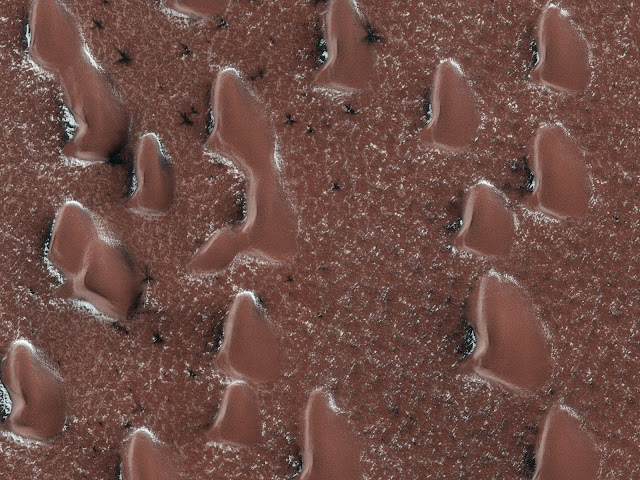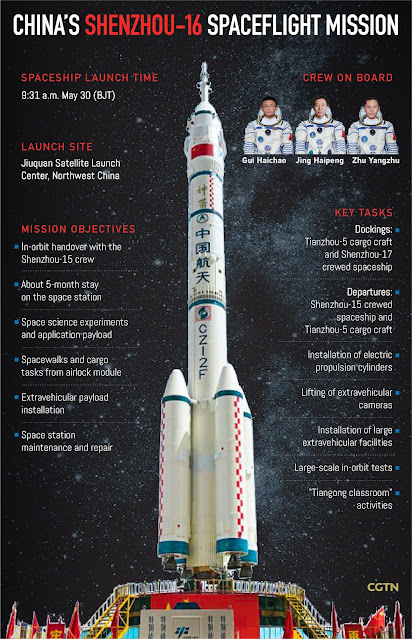Mars: Dune & Ripple Migration in Nili Patera | NASA Mars Reconnaissance Orbiter
Nili Patera is a region on Mars in which sand dunes and ripples are moving rapidly. NASA's Mars Reconnaissance Orbiter continues to monitor this area every couple of months to see changes over seasonal and annual time scales.
Here we see obvious activity over a span of less than two Earth years. Three prominent changes are obvious: 1) the dunes are migrating, with position differences of a few meters in some areas; 2) the ripples on the surfaces of the dunes have undergone so much change that they cannot be reliably tracked over this time interval; and 3) the lee faces of the dunes exhibit new avalanches.
These results show that Nili Patera, and other regions on Mars, are areas of active sand migration and landscape erosion.
This image was acquired on August 31, 2012, by NASA's Mars Reconnaissance Orbiter (MRO) at an altitude of 271 km from the planet's surface. The image is less than 1 km across.
The University of Arizona, Tucson, operates the High Resolution Imaging Science Experiment (HiRISE) instrument, which was built by Ball Aerospace & Technologies Corp., Boulder, Colorado.
NASA's Jet Propulsion Laboratory, a division of Caltech in Pasadena, California, manages the Mars Reconnaissance Orbiter Project for NASA's Science Mission Directorate, Washington.
“For 17 years, MRO has been revealing Mars to us as no one had seen it before,” said the mission’s project scientist, Rich Zurek of JPL.
Image Credit: NASA/JPL-Caltech/UArizona
Image Date: August 31, 2012
Release Date: May 28, 2023
#NASA #Space #Astronomy #Mars #Planet #RedPlanet #Science #Geology #Landscape #Terrain #Geoscience #NiliPatera #SandDunes #DuneMigration #RippleMigration #WindErosion #MRO #Orbiter #Spacecraft #HiRISE #Camera #JPL #Caltech #UniversityOfArizona #BallAerospace #STEM #Education





.jpg)


